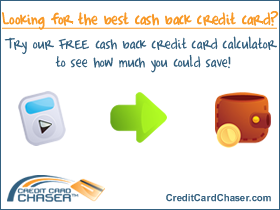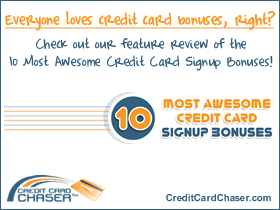While a cash advance on your credit card might be tempting, you should first be aware that it starts to accrue interest immediately and usually at a higher rate than your standard purchase APR (Annual Percentage Rate). Every credit card has different terms and conditions, but cash advances are typically handled the same way by all credit card companies. Read on to learn all of the details about how credit card cash advances work and then be sure and try our free credit card finder!
Interest and Fees Involved in Credit Card Cash Advances
The terms and conditions for credit card advances vary with every credit card company and you should review the terms for each of your specific cards so that you can make educated choices. There are times when a cash advance may be beneficial (see The Pros and Cons of a Cash Advance below) but you want to be sure you choose the best card for it.
Interest on cash advances is typically higher than your standard APR, so whether you have a 0% promotional interest rate or a 12.99% interest rate for purchases, chances are your cash advance rate could be as high as 19.99% or even higher. Furthermore, cash advances do not have a grace period and they begin to accrue interest as soon as the transaction occurs, which means you will pay interest on that purchase whether you pay off the balance that day or at the end of the billing cycle on your next due date. Of course, the longer you carry the balance the higher your charge will be.
Most credit card companies also charge a cash advance fee, which can be a flat fee or a fee calculated on a percentage basis. Flat fees vary but they average around $39 per transaction. You should try to pay off this fee right away otherwise you will most likely be paying interest on that fee as well. Credit card companies that charge a fee based on a percentage will usually calculate up to 4% of the cash advance transaction amount.
Transactions that Counts as a Cash Advance from a Credit Card
The most common type of credit card advance is done through a local ATM (Automatic Teller Machine). Here you simply swipe your credit card, enter your pin number, and request the funds you desire. For security purposes, some credit card companies cap the amount of cash you are allowed to withdraw in a day, such as $200.
Periodically credit card companies will send you a few blank checks to be used any way you desire and usually for any amount up to your credit limit. Some people are surprised to discover that those nice blank checks sent to you by your credit card company are treated as a cash advance. For that reason you should not use those checks until you have checked your terms and conditions and are content with the associated fees and interest rate. Oftentimes, these checks have special rates and terms and conditions that are printed on them or with a corresponding letter, so be sure to read all of the fine print before cashing the check.
Some credit cards allow you to request cash back from your local grocer and these cash backs are typically calculated as part of the purchase amount and not as a cash advance, but you should confirm this with your credit card company before doing it. An example of this is if you purchase $90 worth of groceries and you request cash back of $20, your purchase amount that will be applied to the credit card is $110.
The Pros and Cons of a Credit Card Cash Advance
There may be times when you need to charge something to your credit card company but the merchant you are paying does not take credit cards. Perhaps you need to pay a bill and the late fees or penalties are greater than the interest rate and cash advance fees from your credit card company. Or you may simply be in a pinch where you really need some immediate cash. Provided you understand the consequences of the cash advance it may make perfect sense for you to take advantage of it.
Of course, with the hefty interest rate accruing immediately and the associated fees, cash advances do come at a cost. Furthermore, if you are accustomed to only paying the minimum amount due every month, take note that typically none of that amount is applied to the cash advance, so you need to pay over and above the minimum. Cash advances should be paid off as soon as possible and you should think of them as separate credit card balances so that they are not forgotten.
While cash advances do have their purpose, they are not necessarily the best way to obtain quick cash. If you think you will use the cash advance option offered by most credit card companies, shop around for credit cards that are offering the lowest rates for cash advances. You can always keep that credit card just for those cash advance times and still use another card that has a lower rate for standard purchases. You can compare credit cards right away and for free with our free credit card finder now!
Similar Articles:
- Cash Advance
- Are cash advance credit card rates excessive?
- Convenience Checks
- Florida Credit Union Platinum Rewards Visa Credit Card
- Why is the interest rate on my credit card cash advances higher than for regular purchases?
- How do I get a cash advance from a credit card?
- First Hawaiian Bank Shell Vacations Club Visa Credit Card








